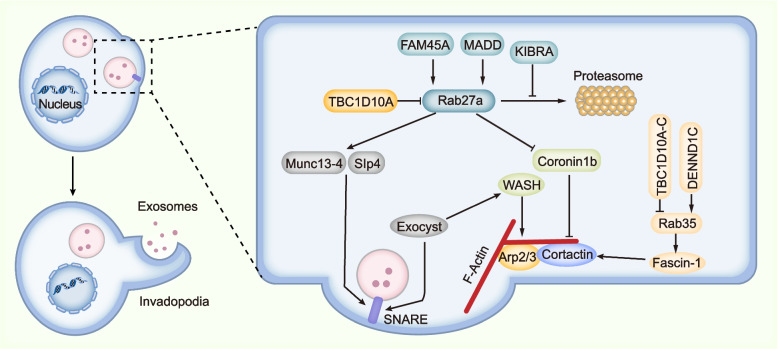Fig. 4.
Proposed model showing the relationship between MVB secretion, actin reorganization and invadopodia formation. These three processes are highly organized and interrelated. Specifically, invadopodia determines the docking and secretion sites of MVBs on the plasma membrane. On the other hand, the fusion of MVBs on the plasma membrane contributes to the formation of invadopodia. And, F-actin formation is vital for both MVB secretion and invadopodia formation. Mechanistically, Rab27a and Rab35 seem to function at the center, the activity of which is regulated by their GAPs or GEFs. Particularly, Rab27a promotes both MVB docking and F-actin formation. Munc13-4 and Slp4 are effectors of Rab27a and function to mediate the docking and fusion of MVBs on the plasma membrane by promoting the formation of SNARE. Concurrently, Rab27a inhibits Coronin1b binding to invadopodia-associated actin and stabilizes Cortactin-mediated branched actin. In addition, actin-binding protein Fascin-1 is an effector of Rab35 and contributes to both invadopodia and exosome secretion. Moreover, exocyst complex binds to WASH, through which to promote Arp2/3 mediated actin polymerization and invadopodia formation. Also, exocyst binds to SNARE and mediates docking and fusion of MVBs on the plasma membrane

